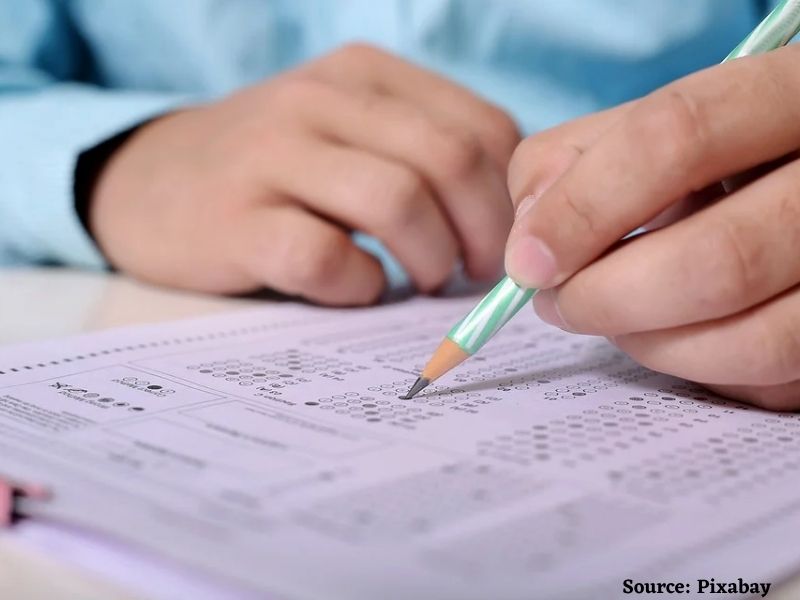The Karnataka Administrative Reforms Commission- II has recommended measures including easing of board exams and reduction of pass percentage to address the dropout rates in the state.
On February 3, a committee headed by TM Vijay Bhaskar, former chief secretary and currently the head of the commission met chief minister Basavaraj Bommai and submitted their recommendations regarding improvement of healthcare, civic amenities, education etc.
In its report, the commission has put forth a suggestion that the pass marks for SSLC students in the state be reduced from the existing 28 to 15 or 12 in theory exams.
To better the enrollments in higher education as envisioned by the National Education Policy 2020, experts have recommended the department of school education and literacy to consider changing the Class 10 and 12 Exam pattern to ask multiple choice questions (MCQ) for 15 marks in Science subjects and 20 marks in Social Science and Language subjects. “Familiarity with MCQs would help students to attempt entrance exams and recruitment tests later,” the report says.
They have also found that the Gross Enrolment Ratio in Karnataka is lesser than its neighbouring states.
Particularly at the secondary stage, GER in Karnataka is lower than in all States, except Andhra Pradesh. But at the higher secondary stage it is lower than in all neighbouring States.
Experts indicate that the drop-out between elementary and secondary stage in the state is nearly 19%. The drop-out between secondary and higher secondary stage is 34% giving a total drop-out rate of 52%. Comparatively, the dropout between GER elementary and higher secondary is 25% in Tamil Nadu, 16% in Kerala, 45% in AP, 49% in Telangana and 36% in Maharashtra. The drop-out rate in Karnataka between elementary stage and higher secondary stage is more than three times the rate in Kerala and more than twice the rate in Tamil Nadu.
“The SEL department should examine the causes for such a high dropout. Enrolment in secondary education needs to be increased. But the largest drop-out, 34%, is between secondary and higher secondary stage. This implies that the drop-out is caused by failure in SSLC examination along with personal reasons for dropping out. The table below shows that SSLC exam pass percentages in Karnataka are on average about 7%-16% below the average in all the neighboring States bar Andhra Pradesh. The issues relating to examination pattern, evaluation system and grace marks guidelines may play a major role contributing to lower pass percentages in SSLC exam,” they said.
Drawing a comparison of the pass percentages in SSLC and PUC for four years it was found that the average pass percentages of SSLC and of PUC in Karnataka is lesser than that in the neighboring States, with the exception of Andhra Pradesh in SSLC.
Stating that there could be two reasons for such a report, they have said it could be an outcome of the quality of teaching and learning in the respective States or the evaluation process consisting of the examination pattern, question paper setting, evaluation guidelines and grace mark system.
“There does not seem to be any evidence to suggest that the teaching and learning quality in Karnataka is very much lower than that in the neighbouring States,” experts ruled.
Among the other recommendations are:
– Pass marks in SSLC theory exam will be reduced from 28 to 15 or 20.
– Reduce drop outs between first and second PU
– Internal assessment for SSLC, PU Arts and Commerce students
– Change to MCQ pattern
– Provision to write bilingual answers in both Kannada and English in PU Arts, Science and Commerce
– Follow TN and Maharashtra models to give grace marks
– The minimum marks in the written SSLC and PU Board exam be reduced from 35% to 30% in all papers
– Have a second supplementary exam for class 10 and 12
Also read: Key to bridge “learning loss” lies in MCQs
